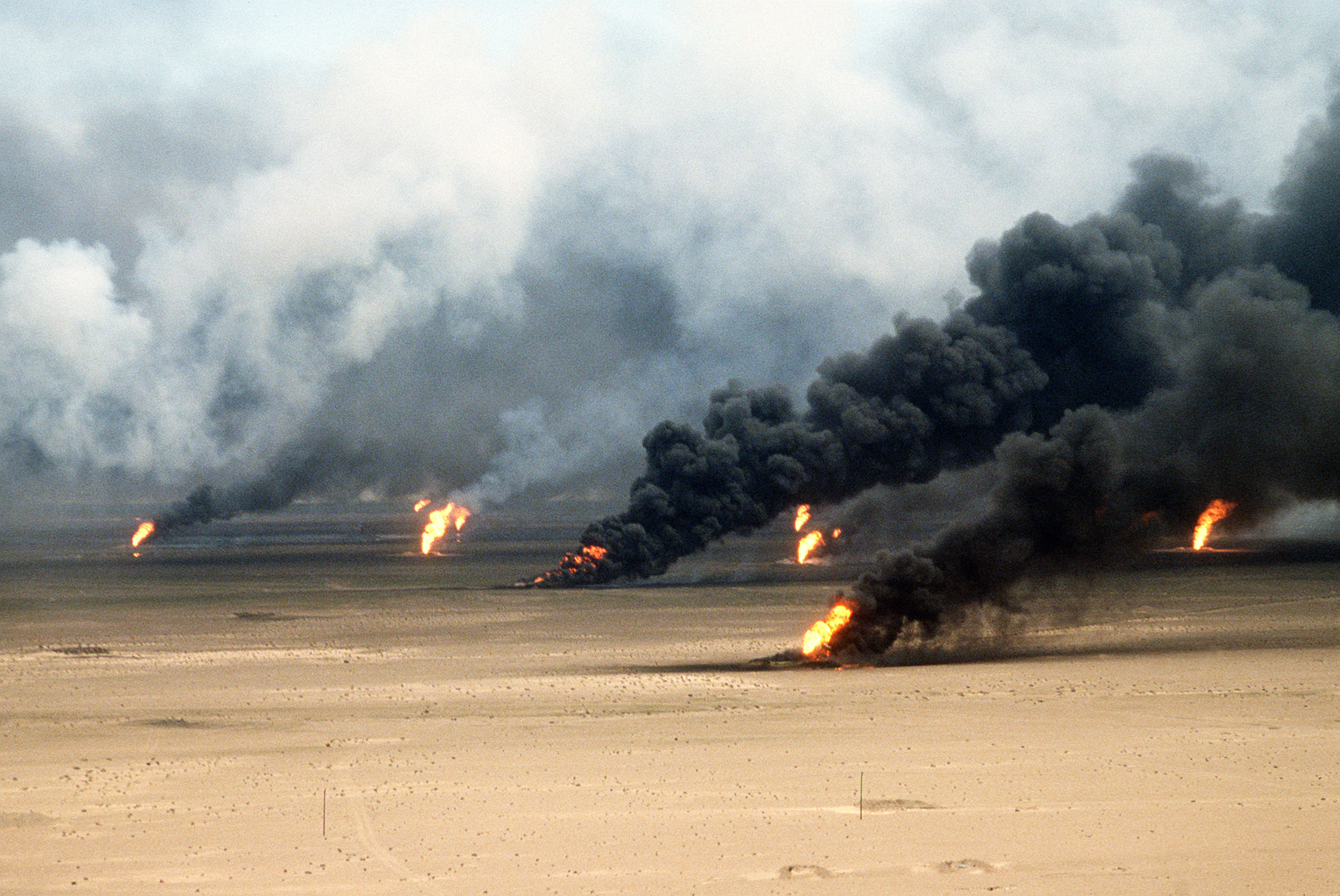 |
| IMAGE: Ecoterror Baghdad by Abby Shahn. Used with permission. |
Not coincidentally, it is the war most blatantly waged for control of oil: Operation Iraqi "Freedom" (OIF). Beginning with the Shock & Awe shelling of Baghdad in March, 2003 and ending...well, the bombing of Iraq hasn't actually ended. Still, in order to quantify emissions, you've got to start and stop somewhere.
Noting that "any assessment of the climate footprint of war must take into account emissions from the millions of tons of explosives used by the military" a 2008 Oil Change International report on OIF, "Climate of War: Behind the Numbers," found:
Untold quantities of emissions have been released due to the use of chemicals with high global warming potential (GWP) in the war. For example, compounds like halon-1301 used for extinguishing fires and found in the safety systems of many military combat vehicles, have a GWP of 5400 (where CO2 has a GWP of 1).... many of the vehicles in use in Iraq contain halon or halon-variants, and it is likely that many of the fire extinguishing agents used to put out blazes caused by explosions or oil fires contain compounds with extremely high GWPs. ™
Heavy reliance on air strikes in the Iraq War has contributed to GHG emissions from the manufacturing and detonation of explosives....In the first days of 2008 alone, US forces dropped over 100,000 pounds of bombs.
The manufacturing of explosives, such as TNT, emits various gases, including nitrous oxide (N2O), a potent greenhouse gas with a global warming potential (GWP) of 296 times that of carbon dioxide. The detonation of explosives, too, releases greenhouse gases. According to some experts, detonation releases approximately 0.32 tons of CO2 per ton of explosive.
And there are other climate costs of OIF to consider.
Remember those oil field fires that burned and burned during the previous war with Iraq, Operation Desert Storm? OIF's oil fires were not as extensive, but they were still a major source of pollution contributing to climate change.
Since 2003, emissions from gas flaring and oil well fires have amounted to an estimated 15 million metric tons (MMT) of CO2...Depending on the number, intensity and duration of fires, burning oil wells in Iraq may have released as much as 1 million metric tons of CO2 per day.
A conservative estimate based on press coverage and industry reports suggests that they have released approximately 3 million metric tons since 2003. At the same time, increased flaring of natural gas at petroleum facilities since the war began accounts for another 12 MMT CO2...
Since 2003, Iraq has flared, on average, 1.6 billion more cubic meters of gas per year than it did during peacetime, which, at a rate of 4.259 pounds CO2 per cubic meter of gas, translates to 3,099,716 metric tons of CO2 per year, or approximately a cumulative 12 MMT CO2 between 2004 and 2007.
Fuel consumption, of course, is an obvious large part of the climate cost of OIF. It's not as hard to quantify because the Pentagon itself studies its fuel "needs" with an eye to not running out. Around 100 MMT CO2 is the estimated climate cost for fuel, fuel to transport fuel, and fuel to transport troops and equipment for OIF 2003-2008.
Less obvious is the carbon footprint of cement used to rebuild destroyed or damaged infrastructure, estimated at 33 MMT CO2 for the same period.
Add it all up and what do you get? A climate crime equivalent to putting 25 million more cars on the road in the U.S.
Between 2003 and 2007, the Iraq war was responsible for at least 141 million metric tons of carbon dioxide equivalent.You can view the sources and conversion factors used to calculate these figures here.
Then, use this handy tool to write to your local newspaper and elected officials suggesting that no conversation on climate change can afford to ignore the contribution of the Pentagon's wars.

.jpg)
No comments:
Post a Comment
Because of a deluge of spam, I have had to switch to moderated comments. Sorry for the inconvenience.